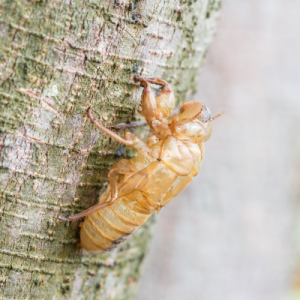There are a few key features that ALL living things have in common. All living things need water to survive, all living things contain carbon in their genetic makeup, and all living things depend on enzymes to function.
From the largest elephants of the plains and whales of the seas, to the tiniest microorganisms and even the flowers and the trees, enzymes serve as catalysts for all of these.
Ok, so maybe I’m no Dr. Seuss but I can explain what enzymes are, how they scientifically work, and what they are supposed to do. This article will give you some new random facts to impress at the dinner table…. or at least help to understand how Safe Solutions TweetMint & Lice R Gone products function.
Read on to learn more about the fascinating world of enzymes!
Table of Contents
What Are Enzymes?
What Do Enzymes Do?
How Do Enzymes Work?
Final Thoughts
What Are Enzymes?
Enzymes are proteins that are utilized by all living organisms to carry out a variety of tasks and are used as “catalysts”; that is to say they facilitate chemical reactions. There are thousands of different enzymes that have been documented and enzymes are classified based on what substances they react with.
Amylase = these enzymes catalyze carbohydrates.
Lipase = these enzymes digest/break down fats into smaller substances.
Cellulase = enzymes of this class break down plant material (cellulose).
Protease = these enzymes catalyze proteins and this is the type of enzyme we use in TweetMint and Lice R Gone solutions.
Each type of enzyme can only react with its specific substrate (substrates are the compounds like fats/oils, proteins, etc.). A protease will not react with a carbohydrate and vice-versa.
What Do Enzymes Do?

Enzymes perform a variety of tasks for us and other living beings and virtually all chemical reactions could not be performed with the use of enzymes.
From the movement of your fingers and eyes that are currently scrolling & scanning this article, respectively; to digesting food in our stomach, and even for insects to undergo their molting processes – enzymes allow for all of these chemical reactions to take place!
How Do Enzymes Work?
Enzymes work by lowering the amount of energy needed to perform a certain chemical reaction. For simplicity, let’s say it takes 10 units of energy to digest a particle of food in our stomachs. Our body would release enzymes to bring down the energy threshold of 10 units to 4 units allowing our body to fully digest the food using only 6 units of energy (we can spend the other 4 units on other tasks). Once the food is digested, our body would send out hormones to deactivate the enzymes (the process of denaturing) to “turn them off” and the energy threshold would return to 10 units.
How do enzymes know what to break down and what not to? They utilize a “lock & key” approach. Enzymes are produced with a specific design (they mimic the shape of puzzle pieces at the microscopic level) and can only combine with their specific substrates, which match the puzzle-pieced (key) shape of the enzyme. Using the protease & carbohydrate example above, the protease lacks the correct shape to combine with carbohydrates – this “key” cannot open that specific “lock”.
Final Thoughts
Now that we have answered the whats & hows of enzymes, we can apply this information to TweetMint & Lice R Gone products.
For TweetMint Enzyme Cleaner, the enzymes help to digest a plethora of stains: food, urine, oils to name a few. Along with the other ingredients, the enzymes are able to completely remove stains at the microscopic level, and this also means TweetMint can eliminate odors, as the stains are fully-removed.
For TweetMint Plant Wash, the enzymes, along with the other ingredients, are able to literally “eat” away fungi and digest certain particles in the soil to help aerate.
For Lice R Gone, lice can be fully-removed as the enzymes can work on digesting their protein-rich exoskeletons. Lice R Gone is the only lice shampoo that has an answer to the nit eggs, as the shampoo can also crack-open the nits; making them unviable. The enzymes in Lice R Gone also are able to break-down the “nit-glue,” so the eggs often are able to slide down the hair shafts for easy removal.
For Horse Fly TweetMint, the enzymes are able to remove oils, particles found in sweat, and dirt & grime from horse’s coats for a rejuvenating spa-like shampoo; leaving coats luxurious.
I hope you enjoyed this article and learning about the fascinating world of enzymes.
If you would like to read more articles many more are available on our Bug Blog here: https://www.safesolutions.com/blog/
Please make sure to follow us on your preferred social media, as we always post when a new article has been uploaded. You can follow us on Facebook @safesolutionsinc or on Instagram @safesolutions
Thanks for reading!
-Gage




